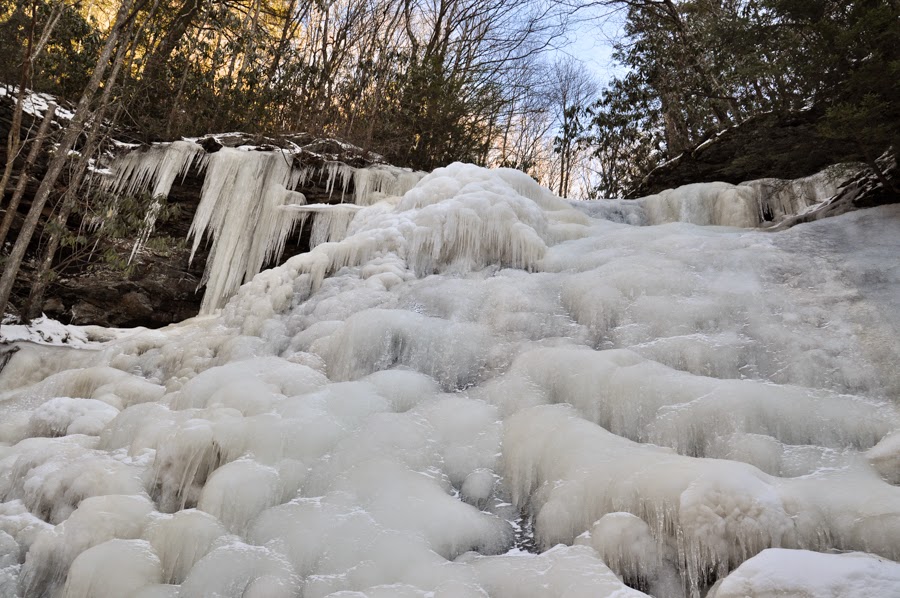When one drives from Front Royal to the Washington, DC area on I-66, just before the outskirts of the suburbs, there is a cliff band visible off to the left (north). I have always sort of wondered about that cliff band, but I didn't realize it was an area that was open to the public. Recently, a notice went up on a hiking board that a place called High Point in the Bull Run Mountains Conservancy (BRMC) is going to close to the public on January 15, 2015. It turns out that those cliffs are High Point. I had overlooked BMRC because the length of the trail system is not what I would generally consider worth the drive. The closure changed the equation a bit, so a friend and I decided to visit on Friday for the last day of our holiday vacation.
When we arrived, there were a number of people and cars in the parking lot. They must have taken a different route to the cliffs, though, because we saw very few of them on the trails. We hiked past the mill that is visible on I-66 and then turned north towards the cliffs. After a pleasant, moderate climb, we made it to the overlook, which had a really nice nice view. I happen to have spent a lot more time west of the Blue Ridge, so seeing it from the east was somewhat of a novelty.
After lunch on the cliffs, we returned down the trail and turned down the Ridge Loop Trail. At the bottom of a steep descent, we crossed Catlett Branch and followed an old path to an abandoned stone quarry. This was one of the nicest parts of the walk. The stream was pretty and we had this little valley to ourselves. After returning to the trail, we passed old house foundations, an old cemetery, and an abandoned farmhouse before we reached the road and the car.
It was a really pleasant hike. We hiked a total of seven miles, which normally wouldn't make it worth the drive, especially given the reported crowding levels at this park. We actually didn't see very many people, but there were a lot of cars in the parking lot. My guess is that many people took the most direct route to High Point and returned the same way.
As I noted, the trails to High Point will close permanently on January 15, 2015.
The hike starts by crossing the railroad tracks that parallel I-66.
Chapman Mill can be seen in the middle of the photo.
Another view of Chapman Mill from the Fern Hollow Trail. The mill burned in 1998.
View to the west from High Point cliffs.
Bootshot from High Point.
An old bike frame that was hung on a tree branch.
Catlett Branch near the old quarry.
A tiny fern.
Moss capsules.
My friend noticed this on a beech tree. After some googling, I am pretty sure it is
Scorias spongiosa (Spongy Sooty Mold). It grows on honeydew excreted by beech blight aphids. This tree had quite a bit of it. It is not, apparently, harmful to the trees unless there is so much of it that it interferes with photosynthesis. More information
here.
Near the end of the hike is an abandoned farmhouse. The interesting thing about this place is that the barn is built on to the house. This is the house side.
This is the barn side.



















































